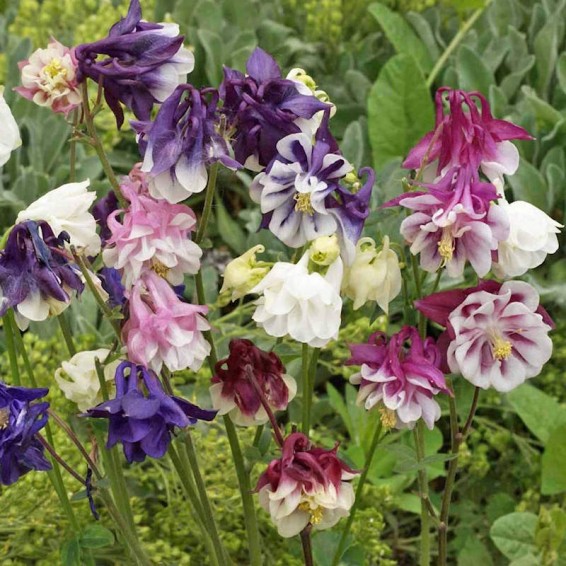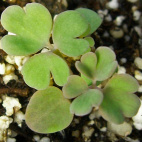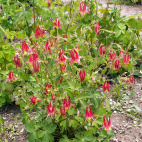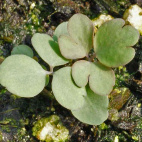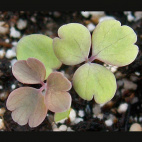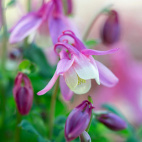Dwarf Columbine Seed Mix
- HOW TO GROW
- FAST FACTS
- REVIEWS
HOW TO GROW
Sowing: Direct sow in early fall, sowing the seed just below the surface of the soil. For spring planting, mix the seed with moist sand and store it in the refrigerator for 60 days before direct sowing after the last frost. The seed can also be started indoors, planted just below the surface of a flat and kept at a temperature of 60-65 degrees F until germination; keep the soil lightly moist.
Growing: Plant in fertile, moist, well-drained soil and full sun or partial shade; this flower appreciates being shielded from the midday sun. Keep the seedlings watered and control weeds. Mature plants tolerate some dryness, but should be watered in the heat of summer. Hot and humid weather may cause the plant to wilt, since this plant prefers cool weather and can survive light frosts. Flowers planted from seed will bloom in their second year of growth. After blooming, the foliage will die off. Established plants can be divided, though they will self sow readily; volunteer plants can easily be transplanted. Deadhead the wilted blossoms if new plants are not wanted. These flowers attract hummingbirds, butterflies, and bees and resists deer. Its natural growth in rocky areas makes it a good choice for rock gardens.
Harvesting: Columbine makes a lovely cut flower. Choose blossoms that have just opened for the longest vase life. Keep in mind that this plant can be toxic and should not be ingested.
Seed Saving: Keep in mind that this plant will cross pollinate easily with other varieties of columbine. Watch the maturing seed pods carefully, since they will open and expose their seed when fully ripe. Shake the open pods into a container to remove the seed. Store the seed in a cool, dry place for up to two years.
FAST FACTS
Common Names: European Columbine, European Crowfoot, Granny's Bonnet, Granny's Nightcap
Latin Name: Aquilegia vulgaris
Species Origin: Central and Southern Europe
Type: Garden Flowers
Life Cycle: Perennial
USDA Zones: 3, 4, 5, 6, 7, 8, 9, 10, 11, 12
US Regions: California, Mountain, Arid/Desert, Plains/Texas, Midwest, Northern, Northeast, Southeast
Seeds per Ounce: 20,000
Stratification: Cold/Wet for 8 Weeks
Germination Ease: Stratify 8 Weeks
Sunlight: Part Sun, Shade
Height: 16 Inches
Color: Mixed, White, Pink, Red, Blue, Purple
Bloom Season: Blooms Late Spring, Blooms Early Summer
Uses: Attracts Pollinators, Attracts Honeybees, Hummingbirds, Deer Resistant
Love seeds & website
Your seeds are great but my favorite feature is the map on your website that shows where plants are found most often. I love trying new plants too often I try one that matches zone, etc but still have moderate success. I alway have good success when the map shows it grows in my area (right down to the county levelj
Great germination!
I pre-chill and always get great germination, as I do with all seed from Everwilde.
Dwarf? Columbines
These just bloomed for me after planting the seed last spring, which is what I expected. They are lovely & have good vigor; but they are all about 30" high. Not what I consider dwarf. But I like them.
Columbine Seeds
Fast shipping. Can't wait to see them grow.
columbine
Seeds arrived quickly, won't know about germination til later saving to fall plant.
prompt service and advice
Dwarf colubine seeds arrived in May with package instructions to plant in the fall. Called staff to ask about refrigerating seeds now vs. actual fall planting.
Staff said needed 60 days in fridge so just put seeds in cool dry spot until fall for zone 5-6. I probably saved my $10 ( seed cost and shipping) investment thanks to staff' knowledge.
DESCRIPTION
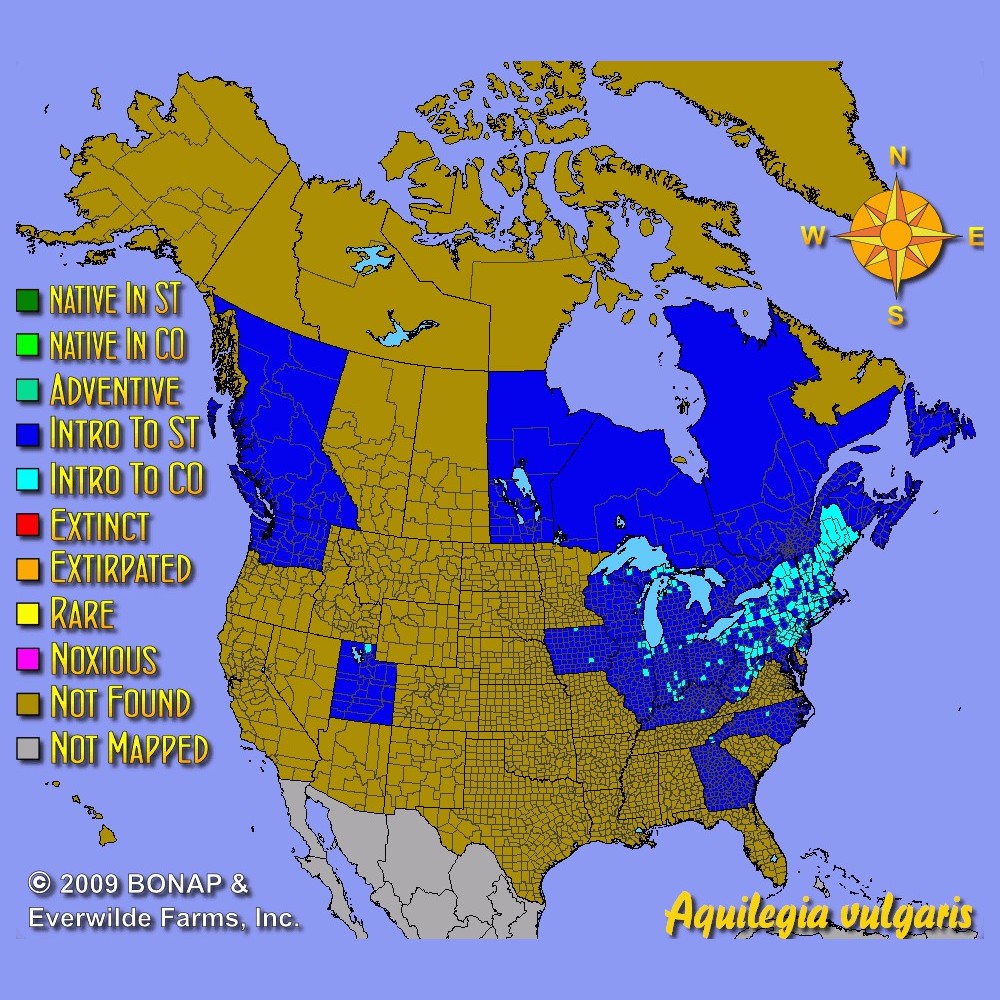
HOW TO GROW
Sowing: Direct sow in early fall, sowing the seed just below the surface of the soil. For spring planting, mix the seed with moist sand and store it in the refrigerator for 60 days before direct sowing after the last frost. The seed can also be started indoors, planted just below the surface of a flat and kept at a temperature of 60-65 degrees F until germination; keep the soil lightly moist.
Growing: Plant in fertile, moist, well-drained soil and full sun or partial shade; this flower appreciates being shielded from the midday sun. Keep the seedlings watered and control weeds. Mature plants tolerate some dryness, but should be watered in the heat of summer. Hot and humid weather may cause the plant to wilt, since this plant prefers cool weather and can survive light frosts. Flowers planted from seed will bloom in their second year of growth. After blooming, the foliage will die off. Established plants can be divided, though they will self sow readily; volunteer plants can easily be transplanted. Deadhead the wilted blossoms if new plants are not wanted. These flowers attract hummingbirds, butterflies, and bees and resists deer. Its natural growth in rocky areas makes it a good choice for rock gardens.
Harvesting: Columbine makes a lovely cut flower. Choose blossoms that have just opened for the longest vase life. Keep in mind that this plant can be toxic and should not be ingested.
Seed Saving: Keep in mind that this plant will cross pollinate easily with other varieties of columbine. Watch the maturing seed pods carefully, since they will open and expose their seed when fully ripe. Shake the open pods into a container to remove the seed. Store the seed in a cool, dry place for up to two years.
FAST FACTS
Common Names: European Columbine, European Crowfoot, Granny's Bonnet, Granny's Nightcap
Latin Name: Aquilegia vulgaris
Species Origin: Central and Southern Europe
Type: Garden Flowers
Life Cycle: Perennial
USDA Zones: 3, 4, 5, 6, 7, 8, 9, 10, 11, 12
US Regions: California, Mountain, Arid/Desert, Plains/Texas, Midwest, Northern, Northeast, Southeast
Seeds per Ounce: 20,000
Stratification: Cold/Wet for 8 Weeks
Germination Ease: Stratify 8 Weeks
Sunlight: Part Sun, Shade
Height: 16 Inches
Color: Mixed, White, Pink, Red, Blue, Purple
Bloom Season: Blooms Late Spring, Blooms Early Summer
Uses: Attracts Pollinators, Attracts Honeybees, Hummingbirds, Deer Resistant
Reviews
Review
Love seeds & website
Your seeds are great but my favorite feature is the map on your website that shows where plants are found most often. I love trying new plants too often I try one that matches zone, etc but still have moderate success. I alway have good success when the map shows it grows in my area (right down to the county levelj
Review
Great germination!
I pre-chill and always get great germination, as I do with all seed from Everwilde.
Review
Dwarf? Columbines
These just bloomed for me after planting the seed last spring, which is what I expected. They are lovely & have good vigor; but they are all about 30" high. Not what I consider dwarf. But I like them.
Review
Columbine Seeds
Fast shipping. Can't wait to see them grow.
Review
columbine
Seeds arrived quickly, won't know about germination til later saving to fall plant.
Review
prompt service and advice
Dwarf colubine seeds arrived in May with package instructions to plant in the fall. Called staff to ask about refrigerating seeds now vs. actual fall planting.
Staff said needed 60 days in fridge so just put seeds in cool dry spot until fall for zone 5-6. I probably saved my $10 ( seed cost and shipping) investment thanks to staff' knowledge.
Also Consider These:
-
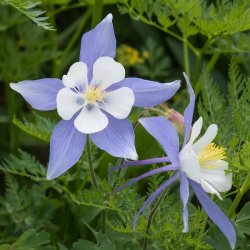 Blue Rocky Mountain Columbine Seeds
Aquilegia caerulea
This blue beauty grows in the meadows and cliffs of the Rocky Mountains. Many gardeners prize this clump-forming perennial with its large upward-facing blue and white flowers - it is so unique! Fill your home garden with a variety of our Midwest wildflower seed mixes.Quick Viewx
Blue Rocky Mountain Columbine Seeds
Aquilegia caerulea
This blue beauty grows in the meadows and cliffs of the Rocky Mountains. Many gardeners prize this clump-forming perennial with its large upward-facing blue and white flowers - it is so unique! Fill your home garden with a variety of our Midwest wildflower seed mixes.Quick ViewxBlue Rocky Mountain Columbine Seeds
Aquilegia caerulea
This blue beauty grows in the meadows and cliffs of the Rocky Mountains. Many gardeners prize this clump-forming perennial with its large upward-facing blue and white flowers - it is so unique! Fill your home garden with a variety of our Midwest wildflower seed mixes.
$3.48 Pkt - $20.16 / Oz -
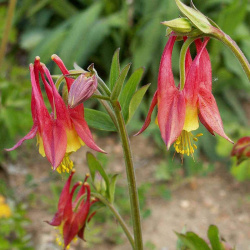 Wild Columbine Seeds
Aquilegia canadensis
Especially attractive to hummingbirds, this wildflower is a perfect choice for nature-lovers. The delicate red and yellow blossoms can grow in the open garden, but they seem to do better with some shelter and shade.Quick View$3.48 Pkt - $26.00 / Oz
Wild Columbine Seeds
Aquilegia canadensis
Especially attractive to hummingbirds, this wildflower is a perfect choice for nature-lovers. The delicate red and yellow blossoms can grow in the open garden, but they seem to do better with some shelter and shade.Quick View$3.48 Pkt - $26.00 / Oz -
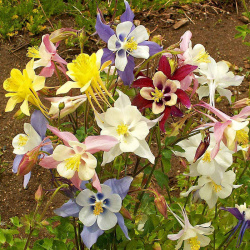 McKana Giants Columbine Seed Mix
Aquilegia caerulea
Developed explicitly for its large colorful blooms, this AAS Award winner first became available in the 1950s. A striking choice for any gardener who loves the distinctive columbine shaped flowers.Quick View$3.48 Pkt - $20.16 / Oz
McKana Giants Columbine Seed Mix
Aquilegia caerulea
Developed explicitly for its large colorful blooms, this AAS Award winner first became available in the 1950s. A striking choice for any gardener who loves the distinctive columbine shaped flowers.Quick View$3.48 Pkt - $20.16 / Oz -
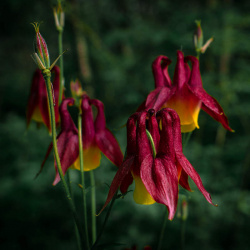 Out Of Stock
Oriental Columbine Seeds
Aquilegia oxysepala
These unusual maroon blossoms are native to parts of northern Asia and Europe. The lovely plant thrives in dry, sunny spots in open forests or on rocky slopes.Quick View$2.98 Pkt - $10.19 / Oz
Out Of Stock
Oriental Columbine Seeds
Aquilegia oxysepala
These unusual maroon blossoms are native to parts of northern Asia and Europe. The lovely plant thrives in dry, sunny spots in open forests or on rocky slopes.Quick View$2.98 Pkt - $10.19 / Oz





